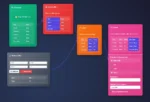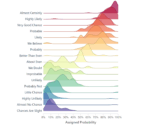The effectiveness of your analytics capabilities directly determines how your business navigates critical decisions. Real-time analytics architecture positions organizations ahead of the curve, empowering decision-makers with instant access to data-driven insights. As digital transformation accelerates, the volume and speed at which data is being generated makes it crucial to clearly understand patterns and frameworks that support continuous, instant analytics. In this article, we unravel proven approaches, best practices, and key patterns used as foundational elements in leading real-time analytics architectures. Whether your goals involve enhancing customer experience, optimizing operational efficiency, or proactively identifying risks, understanding these architecture patterns will serve you as a technological strategist, aligning investments with insights, ensuring your team confidently masters every byte of data.
An Overview of Real-Time Analytics and Its Importance
Real-time analytics refers to processing vast streams of data as they arrive to deliver actionable insights instantaneously. Organizations use these insights to respond swiftly to immediate business events, customer interactions, or operational complexities. Industries such as finance, manufacturing, e-commerce, and healthcare increasingly rely upon these timely analytics patterns to ensure their strategic agility, minimize downtime, enhance customer personalization, and effectively navigate continuous innovation contexts.
While traditional batch processing provides valuable historical insights, it often lags behind in terms of immediacy. In contrast, real-time analytics architectures empower businesses by drastically decreasing time-to-insight. For example, consider an e-commerce firm that uses real-time analytics for personalized customer suggestions or a financial services company employing stream processing for proactive fraud detection. These strategic implementations enable businesses to build deeper customer relationships and establish comprehensive operational visibility.
Beyond direct business applications, real-time analytics contributes significantly to aligning internal teams around data-driven culture, helping companies break down silos and fully commit to digital innovation. Whether it’s leveraging PostgreSQL databases efficiently with the support of specialized PostgreSQL consulting services or adopting modern cloud solutions, building the right real-time analytics infrastructure not only enhances agility—it fundamentally transforms your approach to data-driven decision-making.
Key Architecture Patterns for Real-Time Analytics
Event-Driven Architecture (EDA)
An event-driven architecture is among the primary building blocks that enable real-time analytics solutions. These architectures operate on the fundamental principle of events—discrete occurrences tracked and communicated in real-time. Event-driven systems quickly react to various inputs, such as user actions, sensor signals, or transaction statuses, efficiently capitalizing on each unique real-time opportunity as it arises.
The major components of an EDA typically include event producers (applications generating information), message brokers (like Apache Kafka, RabbitMQ, or AWS Kinesis), and event consumers (analytical and operational services performing actions based on real-time data). This seamless propagation of events through decoupled systems allows true resiliency and scalability within your real-time analytics strategy.
With an effective implementation of EDA, organizations can conduct instantaneous analysis on high volume event streams without delays. Technology leaders benefit immensely from this responsiveness, particularly when coupled with tools that enhance business intelligence capabilities and machine learning models. Investing in an event-driven architecture aligns your enterprise to rapidly adjusting markets and significantly reduces latency in decision-making.
Lambda Architecture
Lambda architecture provides an elegant solution to the challenges inherent to real-time analytics—merging speed and batch processing. This innovative approach features separate layers specifically designed to manage velocity and accurate computation, namely a speed layer tailored for delivering prompt, approximate insights and a batch layer focused on stable, accurate long-term reporting and historical analytics.
Employing Lambda architecture allows businesses to operate optimized real-time analytics with minimal compromise on data accuracy or speed. Typically, streaming technologies (such as Apache Flink, Storm, or Spark Streaming) are employed alongside batch analytics platforms to provide comprehensive views of the data, enhancing the analytical accuracy and enabling a thorough historical evaluation of data streams.
Integrating Lambda architecture patterns effectively empowers organizations to thoroughly investigate and adjust to patterns observed in both short-term and historical analytics data. With Lambda architectures in place, enterprises balance immediacy and accuracy within their analytics initiatives, ultimately leading to more impactful strategic decisions, enhanced predictive accuracy, and deeper understanding of trending customer behaviors and operational efficiency.
Microservices-based Analytics Architecture
Microservices architectures segment applications into independently deployable and scalable modules. For real-time analytics scenarios, this pattern significantly benefits agility and resilience by allowing analytics features to scale and evolve independently. Particularly suitable for dynamic enterprises, microservices promote rapid adjustments in response to unique business insights.
Implementing microservices helps enterprises distribute real-time analytical workloads systematically across multiple dedicated modules, each independently managed, maintained, and optimized. Teams can utilize versatile technological stacks optimized per module, combining asynchronous processing powered by technologies such as Node.js. Understanding how asynchronous patterns function effectively in software architecture—as explained thoroughly in our insights into Node.js single-processor execution and its asynchronous superpowers—can greatly enhance the design of a robust and high-performing real-time analytics ecosystem.
The advantage of employing microservices-based architectures extends beyond structural benefits. Decision-makers derive clear visualizations and effectively utilize resources without bottlenecks; thus, operating costs are reduced, and resource allocation becomes efficient. Leveraging container orchestration and automated deployments can greatly simplify this ecosystem, streamlining the implementation of real-time analytics architectures across diverse teams.
Integrating Artificial Intelligence (AI) and Machine Learning (ML) Capabilities
Modernizing your real-time analytics strategy increasingly involves integrating sophisticated artificial intelligence and machine learning tools. AI-driven analytics processes vast structured and unstructured data streams instantaneously for predictive insights, uncovering critical patterns that humans may overlook. Organizations that adopt ML and AI within their real-time analytics architectures typically experience substantially improved efficiency, including enhanced fraud detection, personalized recommendation engines, anomaly detection, and predictive maintenance strategies.
Furthermore, incorporating core principles of AI agents into your analytics infrastructure enables autonomous event detection and smart decision-making processes that continuously self-enhance. AI agents monitor incoming data streams, continuously learning from events to significantly enhance predictive accuracy and strategic forecasts. The integration of intelligent agents positions enterprises to lead rather than lag behind in data-driven innovation.
With the launch of new platforms, such as Dev3lop’s innovative software solution Canopys Task Scheduler, combining artificial intelligence with real-time analytical tasks has become increasingly seamless. Businesses that align AI and real-time analytics architectures progress rapidly towards sustained innovation, mastering complexity without compromising agility.
Best Practices for Building Real-Time Analytics Architectures
Building effective real-time analytics architectures is more than merely selecting the right technologies. Success revolves around clearly establishing business goals, addressing scalability and reliability requirements, and carefully considering privacy and security protocols. Start small with clearly defined objectives and iterate based upon learnings, systematically scaling your architecture to meet growing analytical demands. Choose robust and flexible technologies aligned with your strategic business targets and clearly document dependencies and data workflows.
Investing in continuous monitoring and performance tuning enables swift identification and rectification of bottlenecks—ensuring stable operation in competitive conditions. Equally important, implement strict data governance policies, clearly defined access control practices, and robust encryption standards to guard against compliance concerns and data breaches. With these practices in place, your enterprise safeguards its real-time analytical infrastructure, ensuring that it functions reliably, securely, and efficiently.
Finally, consider collaborating closely with domain experts who possess specialized skills, such as PostgreSQL or cloud infrastructure knowledge. Consulting services and strategic expertise from specialists dramatically improve the likelihood of successfully implementing sophisticated analytical architectures—making sure your organization confidently navigates digital transformation workstreams and future challenges.
The Future of Real-Time Analytics Architectures
As the technological landscape evolves, real-time analytics architectures will continue expanding across blurred boundaries between data lakes, warehouses, and online transaction systems. Technologies like edge computing, AI-enhanced analytics, and quantum computing promise further advancement, dramatically improving speed, efficiency, and precision. Organizations that proactively evaluate these emerging innovations eliminate blind spots, amplify their strategic agility, and move decisively into an analytics-driven future.
By gaining mastery over these real-time analytics principles and patterns, your teams confidently embrace complexity, responding strategically to rapidly changing markets. Now is the time to equip your enterprise with the infrastructure necessary for continuous innovation at scale, transforming your decision-making dynamics into innovation-focused strategic advantages.



















